This is the second part of a series of posts where Elliott will share his inside track on his experience of going through an incubator program. You can find the other editions here:
- Part I (Great Expectations)
- Part III (Design Thinking)
- Part IV (Legal & Fundraising)
- Part V (Marketing & Networking)
- Part VI (Pitching, Decks & Financials)
- Part VII (Demo Day & Last Days)
- Part VIII (The Round Up)
Hi there, my name is Elliott. Recently, the well-renowned F10 FinTech incubator accepted my startup Abroaden into their 2021 Barcelona batch.
Clemens from Barcinno kindly invited me to blog about our experience in the incubator as we go through the program.
In what is my second installment, I will be sharing my thoughts on what was an amazing, but busy month.
If you haven’t read Part 1 yet, I would recommend checking it out.
Back to school
The incubator kicked off at the beginning of March.
It has been a long time since I’ve been in a classroom. That all changed on day one.
From the get-go, we were inundated with information and learning huge amounts.
On day one alone, we were bombarded with a laundry list of new names, new faces, and new information.
After a whirlwind of introductions, we dove straight into the material.
The goal of an incubator is three-fold:
- Help early-stage entrepreneurs build a great startup.
- Introduce founders to people who can help them.
- Meet with investors.
The incubator runs on a monthly cycle of masterclasses and sprints that enables us to meet the first objective.
Our business idea, mission, users, and co-founder roles were the focus of March’s program.
Also, there’s pitching.
Lots, and lots, and lots of pitching.
Each day of the masterclass would feature one or two workshops on one of these topics.
Generally, they go like this:
Each participant has access to an online learning platform similar to Coursera or Udemy.
They contain video presentations for each workshop’s subject, along with slide decks and other complementary videos and texts.
We spend the first hour watching the course video given by an expert on the topic.
After finishing the clips, we break out into some exercises. For me, this is the highlight.
The incubator space is designed with collaboration in mind. Our co-founders and I get to work, brainstorming with whiteboards, print-outs, and post-it notes, which we used to craft lean canvases, buyer personas, and risks.
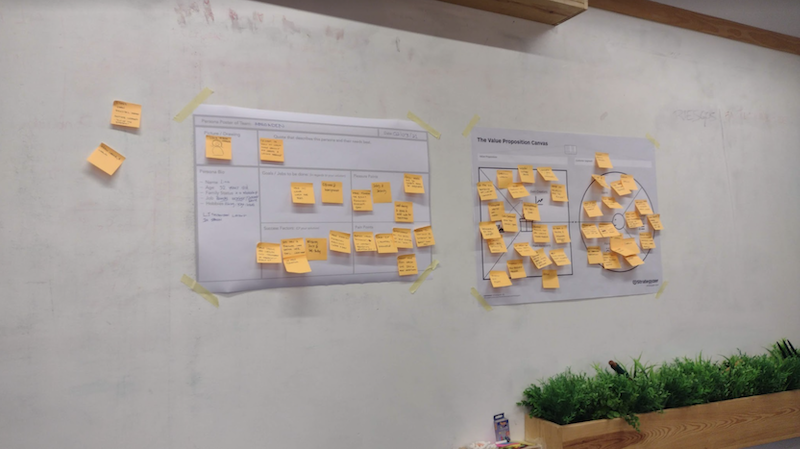
After finishing our drafts, we break out into small groups, giving each other feedback and refining our initial ideas.
Finally, the presenter from the recorded video hops on a zoom call with us. During that session, we get to ask him or her questions we have. In all, it’s a highly efficient way to learn.
The days went by fast, despite working from 09:00 until 18:30 non-stop. While we get an hour for lunch, most of us grab something to go and hit our inboxes.
The first two weeks flew by. By the second Friday, we were armed with the information we needed to complete our sprints.
On the weeks we’re not in the masterclass, we’re treated to talks from some leading voices in design, investment, and other subjects in the field.
If nothing else comes out of my time in F10, I’ll get a first-class education in the ins and out of the startup industry.
Sprint to the milestone
After both the longest and fastest two weeks in recent memory, everyone got to work on their milestone sprint.
As I mentioned, each month, we go through a different theme to position our startups for success.
For March, we worked on refining our business model and, more importantly, making sure we’re building something people want.
The best way anyone can do that is by talking to potential users.
Sounds easy, right?
The thing is that you’re taking the concept you bought into and testing your hypothesis with people who don’t know your vision.
If your hypothesis is correct, you’ve got a viable idea to work on.
If you’re wrong, it’s pivot time.
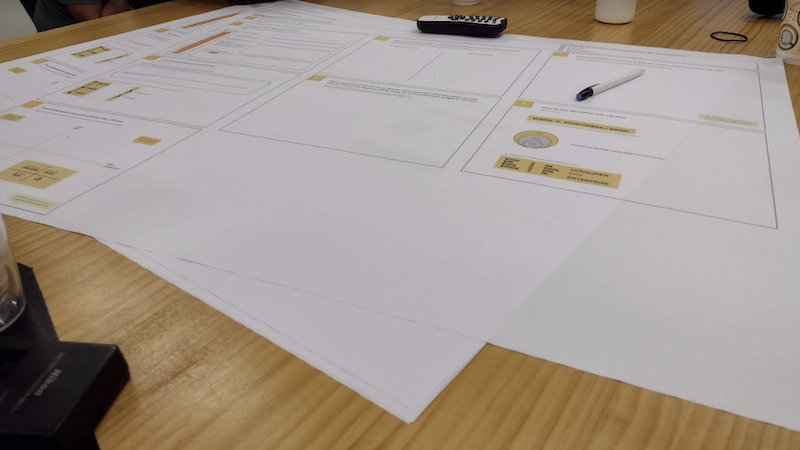
Our idea is to build the first online investment advice and management platform for people living abroad.
All of us, myself included, are long-time ex-pats, and we think we know this problem well.
We roped in a group of friends to test it, either buying them coffee while outside in a cafe or taking an hour for a zoom call.
In the end, we were mostly right about our hypothesis. However, we learned tons about how we should market and interact with our audience that we never would’ve known if we didn’t ask.
Once finishing the interviews, we went back and adjusted our business model, mission, and vision.
After all, a business is only successful if it fixes a real problem. As entrepreneurs, we build to solve our audience’s pain point and not the other way around.
After two and half exhausting weeks working 10-hour days, we delivered our milestones, unlocking a tranche of the funding we’ll receive as participants.
Networking, introductions, and opened doors
Learning and working on our business weren’t the only activities we were up to.
Perhaps the most valuable part of the incubator is the networking.
F10 has done a fantastic job bringing in various experts, leaders, and entrepreneurs for us to speak with.
These individuals come from all corners of the ecosystem, including large banks, successful FinTechs, and prominent venture capitalists.
Additionally, if there’s a person or a company you’d like to have a conversation with, they’ll try to make it happen, including matching each startup with a personal mentor.
Getting networked into the tight-knit Spanish startup scene as an ex-pat/guiri/whatever you want to call is one of the highest hurdles to being an entrepreneur here.
Having this ability to quickly speak to the right people through a warm introduction is such a privilege.
As I go through this program, I’m learning that incubators like F10 are as much about community as they are about building successful startups.
That in itself is worth the price of admission.
An incubator in a pandemic, but not a pandemic incubator
Unless you’ve been (blissfully) checked out for the past 13 months, in-person events have largely disappeared.
Unlike a year ago, though, we have a firm understanding of how this coronavirus spreads and what we can do to prevent it.
The folks at F10 want to make sure that everyone is safe. However, the in-person experience is one of the most significant advantages of being in and running an incubator.
The program wanted to do what they could within health guidelines to make physical presence possible.
To that, we’ve been following some strict protocols so that we can safely follow classes in person. These include:
- Periodic mandatory rapid testing
- Maintaining safe distances
- Wearing a mask unless you’re speaking/presenting to the group
- Keeping the windows open with the air flowing freely
- Hand sanitizer on every table
Of course, these aren’t ideal. But it’s far better than any other alternatives.

Additionally, the onus is on each of us to act responsibly outside of the space. That part isn’t too difficult, considering that we have to follow up on work stuff and hit the hay after finishing a full day of class. The only place we really go after finishing up is to bed.
A peek into the future of working.
For months now, we’ve been told about the upcoming “new normal.”
While I think it’s safe to say that the bulk of that is media hype to get clicks and sell impressions, there is some truth to the prophecy.
We’re split about 50/50 Spanish/non-Spanish companies.
During the two weeks of classes, participants from other parts of Spain came to Barcelona.
Due to border restrictions, almost everyone else had to participate online via Zoom, Slack, and Miro boards.
At first, this arrangement took some getting used to. The two groups — the “roomies” and the “zoomies” — largely kept to themselves.
After a couple of days, though, we came together to break this divide as the incubator works best when everyone’s participating equally.
From that point, we broke out into hybrid teams, where we collaborated together during the workshops.
Logistics aside, I see this hybrid setup as a harbinger of a more open and flexible working system.
For example, one morning during the masterclasses, I needed to stay at home.
To participate in that session, I only had to hop onto the open Zoom channel.
No one in the program batted an eye about this arrangement.
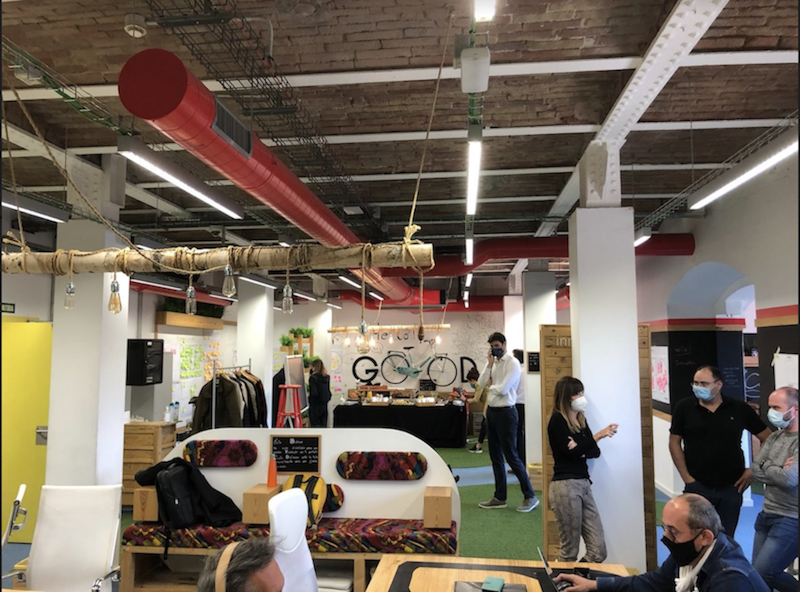
This was a stark contrast to some of my past experiences(and probably you, too) where exceptional work from home arrangements cost political capital in the office, not to mention considerable resistance from management.
For me, I see this hybrid “work wherever is convenient for you” format being the true new normal.
I don’t think that there’s a substitute for in-person collaboration (it’s also one reason I’m bullish on airlines making a rapid comeback).
However, the flexibility will be here to stay.
Happy but exhausted
I’m writing this article on April 7th. Three days ago, we submitted our milestones, giving us a bit of a breather.
People ask me what the first month is like, and the first word that comes to mind is “fun.”
They usually start looking at me like I’m insane when I combine that word with “I’ve worked 11 hours today.”
But you know what? I can’t think of a better word to describe my first month through the program.
It haswas been a hell of a ride. We delivered our milestones, and from Monday, we’re into the next masterclass and sprint. The theme? Product!
That said, it hit me over the weekend how exhausted I am. However, it’s a good kind of exhaustion.
It’s where you’re tired, not out of stress (Lord knows we’ve all felt that over the past year), but out of accomplishment.
Hopefully, I can report the same in my next post.



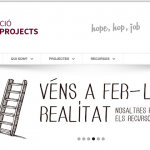

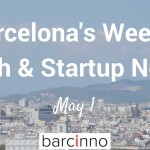
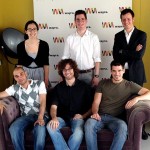
Leave a Reply